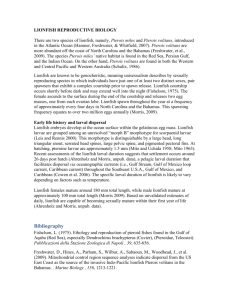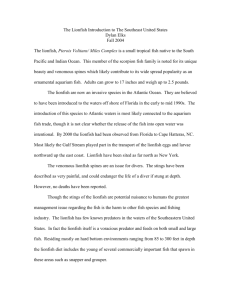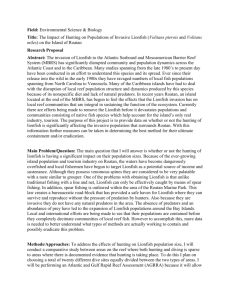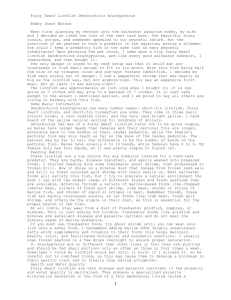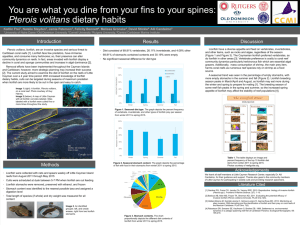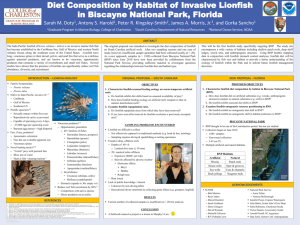File
advertisement
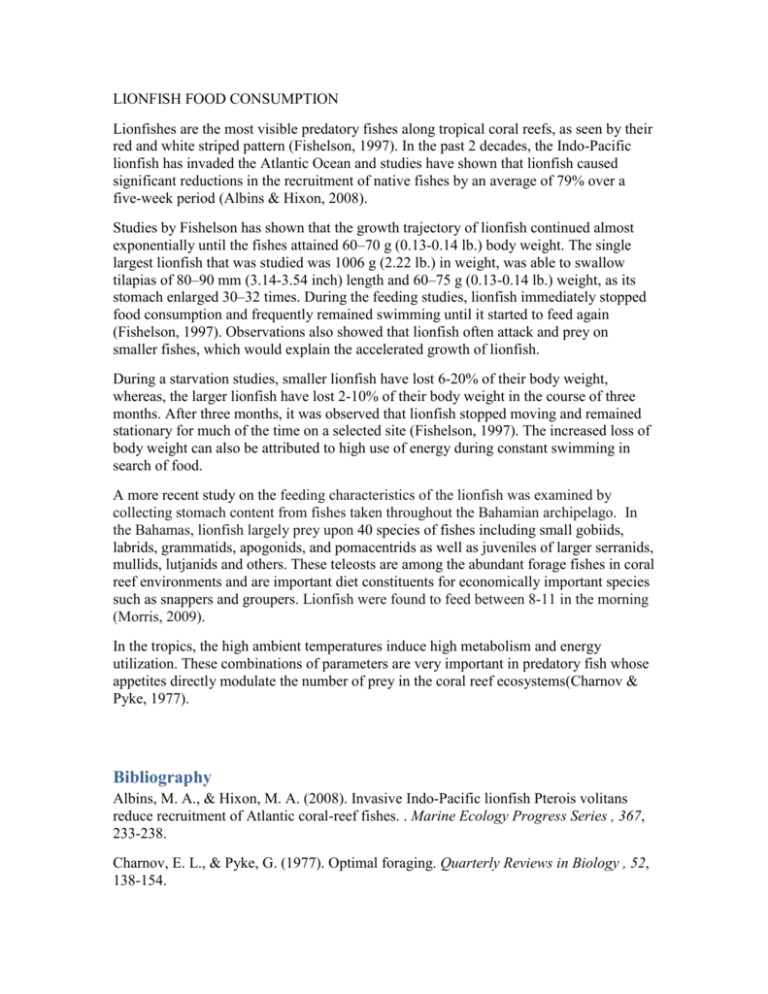
LIONFISH FOOD CONSUMPTION Lionfishes are the most visible predatory fishes along tropical coral reefs, as seen by their red and white striped pattern (Fishelson, 1997). In the past 2 decades, the Indo-Pacific lionfish has invaded the Atlantic Ocean and studies have shown that lionfish caused significant reductions in the recruitment of native fishes by an average of 79% over a five-week period (Albins & Hixon, 2008). Studies by Fishelson has shown that the growth trajectory of lionfish continued almost exponentially until the fishes attained 60–70 g (0.13-0.14 lb.) body weight. The single largest lionfish that was studied was 1006 g (2.22 lb.) in weight, was able to swallow tilapias of 80–90 mm (3.14-3.54 inch) length and 60–75 g (0.13-0.14 lb.) weight, as its stomach enlarged 30–32 times. During the feeding studies, lionfish immediately stopped food consumption and frequently remained swimming until it started to feed again (Fishelson, 1997). Observations also showed that lionfish often attack and prey on smaller fishes, which would explain the accelerated growth of lionfish. During a starvation studies, smaller lionfish have lost 6-20% of their body weight, whereas, the larger lionfish have lost 2-10% of their body weight in the course of three months. After three months, it was observed that lionfish stopped moving and remained stationary for much of the time on a selected site (Fishelson, 1997). The increased loss of body weight can also be attributed to high use of energy during constant swimming in search of food. A more recent study on the feeding characteristics of the lionfish was examined by collecting stomach content from fishes taken throughout the Bahamian archipelago. In the Bahamas, lionfish largely prey upon 40 species of fishes including small gobiids, labrids, grammatids, apogonids, and pomacentrids as well as juveniles of larger serranids, mullids, lutjanids and others. These teleosts are among the abundant forage fishes in coral reef environments and are important diet constituents for economically important species such as snappers and groupers. Lionfish were found to feed between 8-11 in the morning (Morris, 2009). In the tropics, the high ambient temperatures induce high metabolism and energy utilization. These combinations of parameters are very important in predatory fish whose appetites directly modulate the number of prey in the coral reef ecosystems(Charnov & Pyke, 1977). Bibliography Albins, M. A., & Hixon, M. A. (2008). Invasive Indo-Pacific lionfish Pterois volitans reduce recruitment of Atlantic coral-reef fishes. . Marine Ecology Progress Series , 367, 233-238. Charnov, E. L., & Pyke, G. (1977). Optimal foraging. Quarterly Reviews in Biology , 52, 138-154. Fishelson, L. (1997). Experiments and observations on food consumption, growth and starvation in Dendrochirus brachypterus and Pterois volitans (Pteroinae, Scorpaenidae). Environmental Biology of Fishes , 50, 391–403. Morris, J. A. (2009). Feeding ecology of invasive lionfish (Pterois volitans) in the Bahamian archipelago. Environmental Biology of Fishes , 86, 389–398.


